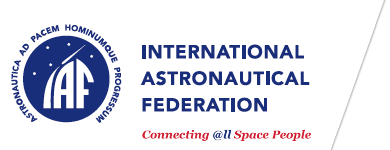session 2
- Title
Technologies that Enable Space Systems
- type
oral
- Description
This session focuses on innovative and technological developments that are often high risk, but which have the potential to significantly enhance the performance of existing and new space systems. Leading-edge technologies that enable space applications come in many diverse forms, from system level innovations down to the subsystem or component level. Examples include instrumentation, sensors, biotechnology, components, micro- and nano-technology, advanced new structures and software techniques. Additionally, architectural solutions incorporating technologies such as artificial intelligence, machine learning, virtual/augmented reality, autonomy and automation are also of interest. The scope of the session includes architectures for single satellite systems or multiple satellite systems, such as constellations, formations, swarms, distributed systems, and system-of-systems (including hybridization with terrestrial systems). Ground-versus-space allocation of functionality and aspects of autonomy, both on-board and on-ground, may be addressed.
- Date
2025-09-30
- Time
- Room
- IPC members
Co-Chair: Ms. Jill Prince, National Aeronautics and Space Administration (NASA), United States;
Co-Chair: Mr. Steven Arnold, The Johns Hopkins University Applied Physics Laboratory, United States;
Rapporteur: Dr. Audrey Berquand, European Space Agency (ESA), The Netherlands;
Rapporteur: Mr. Sybren De Jong, Netherlands Aerospace Centre (NLR), The Netherlands;
Order | Time | Paper title | Mode | Presentation status | Speaker | Affiliation | Country |
|---|---|---|---|---|---|---|---|
1 | 10:15 | STEP: Space TEchnology development Program at Italian Space Agency | 10 | confirmed | Dr. Marco Di Clemente | Italian Space Agency (ASI) | Italy |
2 | 10:25 | Exploring collision avoidance needs for spacecraft formations through guidance optimisation | 10 | confirmed | Mr. Angus Manning | Defence Science and Technology Group (DST Group) | Australia |
3 | 10:35 | 10 | confirmed | Mr. Valentin Petzold | Technische Universität Dresden (DTU) | Germany | |
4 | 10:45 | 10 | confirmed | Mr. Marco Mangialardo | D-Orbit SpA | Italy | |
5 | 10:55 | 10 | confirmed | Mr. Zeyu Gong | Beihang University | China | |
6 | 11:05 | 10 | confirmed | Ms. Neha Upadhyay | India | ||
7 | 11:15 | Proba-3: Functional design and architecture of an autonomous sub-millimetre Formation Flying mission | 10 | confirmed | Mr. Daniel Serrano | SENER Ingenieria y Sistemas, S.A. | Spain |
8 | Enhancing Earth Observation Missions with Dynamic Targeting Strategies | 10 | withdrawn | Mr. Domenico Barretta | Università degli Studi della Campania "Luigi Vanvitelli" | Italy | |
9 | 11:25 | 10 | confirmed | Mr. Connor Langford | The University of Sydney | Australia | |
10 | 11:35 | 10 | confirmed | Mr. Kaizad Raimalwala | Mission Control Space Services Inc. | Canada | |
11 | 11:45 | 10 | confirmed | Dr. Tino Schmiel | Technische Universität Dresden (DTU) | Germany | |
12 | 11:55 | Balancing Focus and Defocus: Optimized Camera-Only Imaging for In-Orbit Satellite Servicing | 10 | confirmed | Dr. Jasprabhjit Mehami | The University of Sydney | Australia |
